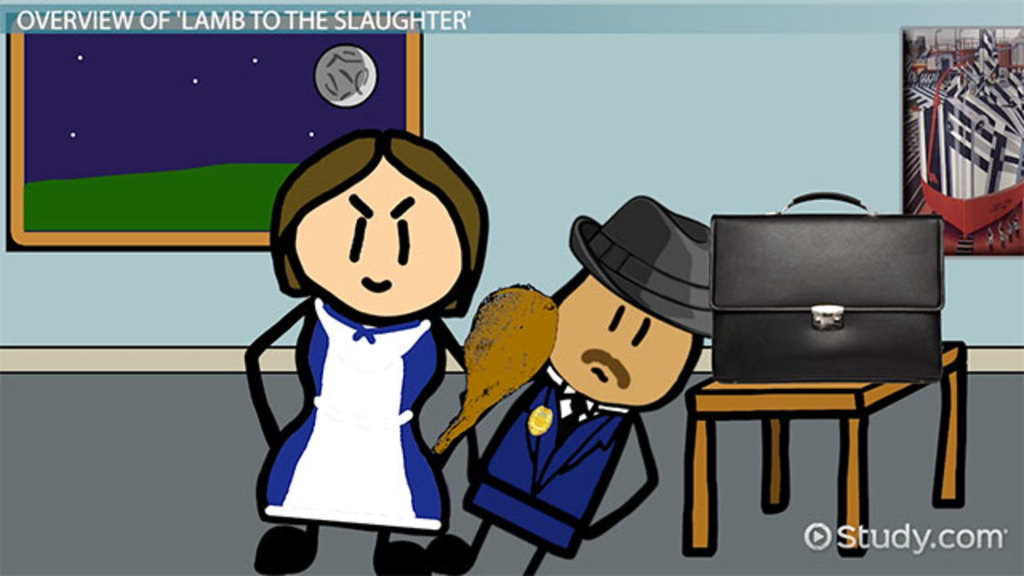In Nefarious November, we will study four of the most well-known stories around the world. For two of the stories that I’ve learned, all of them are very frightening and very interesting. The two stories were written by Roald Dahl. Both of the stories, he uses two main kinds of literacy devices, which helps to make the stories more interesting and more suspense to the readers. Irony is one of the device that we learned from the story called “The Lamb to the Slaughter“. To make our understanding of irony deeper, I was asked to write a pace response explaining examples of ironies used by Roald Dahl in this story. So, please take a look at my pace response.
There are three types of ironies that were used throughout the short story “The Lamb to the Slaughter” written by Roald Dahl. Irony is a literary device that display a situation in which something which was intended to have a particular result has the opposite or a very different result. Roald Dahl uses many ironies because it makes the readers feel excited, angry, shocked, or sometimes relieved to the story. The three types of irony device are verbal, situational and dramatic irony. Situational irony occurs when the actual result of a situation is totally different from what you’d expect the result to be. One of the major section of situational irony is found in the introduction of the story when Mrs. Mary Maloney depicts as a calm, loving lady, who really miss her husband and show a lot of career. However, after the story progresses, we saw a shocked result, in a moment of madness, she then killed her husband without regretting. “She laid aside her sewing, stood up, and went forward to kiss him as he came in. … She loved to luxuriate in the presence of this man, and to feel – almost as a sunbather feels the sun – that warm male glow that came out of him to her when they were alone together.” In the introduction, Dahl presented Mary Maloney who obsessed with her husband and nothing is more comfortable and more meaningful than having Mr. Patrick. Then, after having some conflict, she killed him with a frozen leg of lamb: “At that point, Mary Maloney simply walked up behind him and without any pause she swung the big frozen leg of lamb high in the air and brought it down as hard as she could on the back of his head.” Verbal irony occurs when a speaker’s intention is the opposite of what he or she is saying. “The man glanced around his shop. “How about a nice big slice of cheesecake? I know he likes that.” “Perfect,” she said. “He loves it.” The fact that she said he love it is completely opposite of what she mean. Her husband already died, but she still want cheesecake, which no one was going to eat it. And saying he loved it, but maybe in her mind said he hate it. Dramatic irony occur the most in this story and it happened when the audience knows a key piece of information that a character in a play, movie or novel does not. For example, when Jack Nooman, a police detective said, “Get the weapon, and you’ve got the man.” The reader knew that the weapon that killed Patrick is the frozen leg of lamb. However, Jack doesn’t know that, so the lies in better the two action is a representative of the irony.

